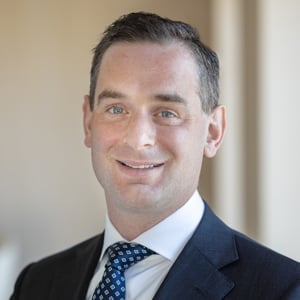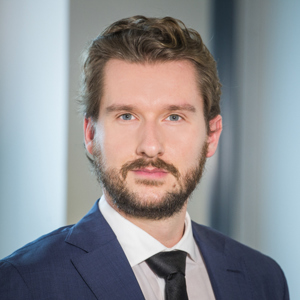Phase 1: The preliminary introductions: is the US sponsor caught by any European regulation?
When a US fund sponsor aims to tap into the European investor market, the first step is usually a series of preliminary introductions with prospective investors. These introductions are typically not focused on specific investment strategies or specific products, but on the sponsor’s experience, track record and team composition. This phase in practice is referred to as pre-pre-marketing and should in general not be subject to any regulatory constraints in the various EU Member States.
Phase 2: Testing the waters on a product: is the US sponsor caught by any European regulation?
If the preliminary introductions have proven to be successful, the way is paved to pitch concrete investment strategies or ideas through pitch decks and fund term sheets for example. In the EU such efforts qualify as pre-marketing. An exact definition of pre-marketing follows from the EU cross-border distribution directive (CBDD). A lot has been said about that definition already and there is little controversy on the concepts used; we therefore do not go into detail here. What the definition generally boils down to is that pre-marketing is the effort of testing EU investor appetite for an investment idea or strategy whereby prospective EU investors cannot be presented with “sign on the dotted line” style documents or other key fund documents which are in final or near-to-final form. A US sponsor can safely assume that it will enter a European regulatory environment as soon as it commences the pre-marketing phase.
What type of regulation applies to pre-marketing efforts?
Pre-marketing can be conducted under two types of regimes: (i) by an EU based authorized alternative investment fund manager (EU AIFM), on the basis of an EU pre-marketing passport, which is recognized in all EU Member States, following implementation of the CBDD, or (ii) by the US sponsor itself, if the law of the local EU Member State allows for it.
- Pre-marketing by EU AIFMs
Pre-marketing efforts conducted by an EU AIFM that are directed towards EU based professional investors are in scope of the CBDD. Such pre-marketing efforts come with passporting rights, meaning that they can be conducted, subject to a notification with the EU AIFM’s home regulator, in all EU Member States without further locally imposed impediments.
Examples of professional investors are institutional investors (e.g., credit institutions, insurance companies and pension funds) and certain large corporates, but HNWI and their investment vehicles do not necessarily qualify. The CBDD became effective through the implementation by the different EU Member States, which was due on 21 August 2021.
- Pre-marketing by US Sponsors
Pre-marketing efforts conducted by non-EU AIFMs are out of the CBDD’s scope and can therefore not benefit from a pre-marketing passport. This does not mean that such efforts escape regulation. A recital in the CBDD instructs EU Member States to ensure that EU AIFMs are not worse off than their non-EU equivalents when it comes to pre-marketing. EU Members States can therefore opt for two extremes and everything in between: either they prohibit pre-marketing towards EU professional investors by non-EU AIFMs or they impose equivalent rules for such efforts on non-EU AIFMs. Local rules governing pre-marketing efforts are generally referred to as national private placement rules (NPPR).
To put it all in a practical context: when a US sponsor flies to Munich for a European investor conference, it is safe to assume the US sponsor is subject to at least the same pre-marketing standards as the EU AIFM in the neighboring stand. Difference is that the US sponsor will not be entitled to the pre-marketing passport and would therefore have to file for a pre-marketing permit on an EU Member State-by-EU Member State basis, if at all available.
What drives the choice between pre-marketing under NPPR or CBDD?
A European-wide offering is typically pre-marketed under the CBDD by using an EU AIFM as it paves the way to a pre-marketing passport. The passport gives easy pre-marketing access to professional investors in all EU Member States.
However, if the US sponsor only targets certain EU Member States and those States provide for a welcoming local pre-marketing regime (not all EU Member States do), the sponsor could opt to secure a local pre -marketing permit for those specific EU Member States only.
But is there actually a choice for a US sponsor given that only EU AIFMs are eligible for a pre-marketing passport?
A US sponsor can only benefit from a CBDD pre-marketing passport for a European wide offering if the US sponsor conducts the pre-marketing by way of an EU AIFM. A US sponsor can consider establishing an in-house EU AIFM and run the pre-marketing through that in-house EU AIFM. However, that solution is commercially not viable for most US sponsors. The launch of an in-house EU AIFM requires a serious investment in terms of local staffing and the approval process for an EU AIFM takes often more than a year. Although an in-house EU AIFM is in most cases not a commercially viable solution, the US sponsor can secure access to the CBDD pre-marketing passport by engaging an EU host AIFM.
The EU host AIFM model, what does it entail?
The EU host AIFM model is well developed in Luxembourg for example. EU host AIFMs effectively manage fund entities on behalf of external sponsors that do not avail of an in-house EU AIFM. EU host AIFMs effectively run the funds’ risk management and certain other functions, but they rely on the fund sponsor for the portfolio management function on an advisory or delegation basis.
There is often a preference for a fund to be managed by an EU AIFM due to (pre-)marketing passport considerations as well as branding, an efficient loan origination process (for credit funds) or getting access to specific pockets of cash. Luxembourg embraces the host AIFM model among others because it avoids a proliferation of smaller and probably less professional, in-house Luxembourg AIFMs which would all require separate regulatory oversight.
What are the key practical considerations when teaming up with an EU host AIFM for pre-marketing efforts?
The very first concern that pops up for US sponsors when their counsel suggest teaming up with an EU host AIFM for pre-marketing are the stand-alone capabilities of the EU host AIFM to pre-market the sponsor’s investment strategy. EU host AIFMs obviously do not avail of business units that can sell the fund like the US sponsor can. Also, the EU host AIFM cannot delegate the pre-marketing to US sponsors as such delegation would only be allowed to certain EU regulated entities. In order to overcome those concerns, the US sponsor and the EU host AIFM must carefully work out a model whereby the EU host AIFM reaches out to the prospective investors and teams up with the US sponsor to pitch the fund’s investment strategies and ideas. This model is known as the pre-marketing chaperone model. Integrating an EU host AIFM in prospective investor-facing efforts is often unexplored territory for US sponsors, but rest assured: EU host AIFMs, and prospective EU investors are familiar with and got comfortable on the model.
Which formalities must be complied with before commencing the pre-marketing effort?
When the US sponsor has decided to run the pre-marketing efforts under the CBDD thus through an EU AIFM (an EU inhouse AIFM or a EU host AIFM) the pre-marketing efforts can start right away. The EU AIFM must however file a notification form, which is typically standardized, with its home regulator within two weeks after the pre-marketing has started. The targeted jurisdictions, the pre-marketing period, the investment strategies and the funds subject of the pre-marketing must be specified. If the US sponsor has opted to run the pre-marketing under a NPPR (if available), the formalities to be complied with are typically similar or more restrictive and no passport will be granted.
What about reverse solicitation, is that door still open?
Pre-CBDD, a number of US sponsors heavily relied on a reverse solicitation strategy. Reverse solicitation entails that a potential investor approaches the sponsor on its own initiative. Such a situation is favorable for the sponsor as it avoids that the sponsor must comply with marketing rules which require notifications and waiting periods and may come with administrative fees.
For some US sponsors it was genuine reverse solicitation: they were approached on the full and own initiative of prospective investors, with which they typically had existing relationships. Other US sponsors relied on less genuine reverse solicitation strategies. Pre- CBDD they effectively conducted pre-marketing style efforts in certain EU Member States. If a prospective investor would reach out later on with a request to see the final fund documents, such request was deemed to occur at the own initiative of the prospective investor and was thus labeled as reverse solicitation. Pre-marketing style efforts were in fact (ab)used as a seedbed for reverse solicitation. These strategies were already questionable pre CBDD and, as explained below, these strategies are hardly feasible nowadays.
As soon as pre-marketing under the CBDD is undertaken the door for reverse solicitation is closed for a period of 18 months. This means that a request by a prospective investor for fund marketing materials (e.g., a subscription document or a final PPM) can only be answered following a marketing registration (as further discussed below). The Luxembourg financial regular (CSSF) stipulates, as per its notification form, that this rule applies on a Member State-by-Member State basis. Hence, pre-marketing in Member State A closes the door for reverse solicitation in Members State A irrespective of whether the relevant prospective investor in Member State A was approached during the pre-marketing phase. The same or even stricter impediments for reverse solicitation should apply when pre-marketing is conducted under relevant NPPR rules.
Phase 3: From pre-marketing to marketing, with or without a passport?
When the pre-marketing efforts conducted by the EU AIFM (which can be an EU host AIFM or an in-house AIFM) have been successful, the marketing phase starts. This phase requires fund documents which allow the investors to make an informed decision. These efforts go beyond pre-marketing and thus qualify as marketing efforts in the sense of the EU alternative investment fund managers directive (AIFMD).
Marketing efforts in respect of an EU alternative investment fund (AIF) which targets professional EU investors can be conducted under an EU marketing passport, provided that the AIF has appointed an EU AIFM. To avoid abuse, the passport is not available if the EU AIF is a feeder to a to a non-EU AIF. The passport gives marketing access to professional investors in all EU Member States without the need to comply with any applicable NPPR, if at all available. To benefit from the EU marketing passport, the pre-marketing relationship with the EU host AIFM can be prolonged and expanded to include marketing efforts. The marketing can commence as soon as the home regulator of the EU AIFM has notified the EU AIFM that the completed marketing notification has been transmitted to the regulators of the targeted EU Member States. In practice the whole notification process takes one to two months.
Although it is rare, instead of being prolonged and expanded, the pre-marketing relationship with the EU host AIFM can also be terminated. In that case, the marketing is conducted under the NPPRs (if available) of the relevant EU Member States. Overall however, virtually all US fund sponsors that have engaged in pre-marketing under the CBDD continue the relationship with the EU Host AIFM, even if the fundraising only targets EU Member States with efficient NPPRs. Drivers to keep the EU Host AIFM on board typically include reluctance to shift regulatory regimes, the expectations created with prospective investors in the pre-marketing phase, branding, investor appetite, and easy access to European markets when it concerns, for example, lending activities.
Teaming up with an EU host AIFM for marketing: some practicalities
Reference is made to the section above on the practicalities of teaming up with an EU host AIFM in the pre-marketing phase. Similar practicalities apply in the marketing phase. The model used for marketing is known as the marketing chaperone model. The marketing chaperone model exists for over a decade now and sponsors, investors and EU hosts AIFMs are all comfortable with it. That being said, to mitigate the EU host AIFM’s investor-facing role, US sponsors sometimes explore the possibility of relying on marketing efforts conducted by the EU fund entity’s EU general partner entity as opposed to relying on the EU host AIFM. In such a situation, the EU general partner entity effectively runs the marketing through its board, which typically includes a US based senior investor relation representatives. Such efforts by the EU fund entity’s EU general partner remain subject to oversight by the EU host AIFM.
Skipping the pre-marketing phase, directly moving to the marketing phase?
If the US sponsor targets an EU-wide capital raise and is thus not keen on a Member State-by-Member State approach, or if the US sponsor anticipates a commitment from investors from EU Member States with a non-existent or inefficient NPPR, it can in fact only run pre-marketing efforts under CBDD or move directly to marketing under the AIFMD. Indeed, why not skip the CBDD pre-marketing effort and move directly to marketing? After all, all efforts conducted in the pre-marketing phase can in general also be covered under a marketing umbrella.
Marketing notifications under the AIFMD require developed fund documents and thus require that legal counsel is put to work, which triggers costs. US sponsors that are fully confident about the success of an EU capital raise,and are thus not concerned about the organizational cost of a fund structure or reputational damage due to a failed marketing process, could consider entering the marketing phase directly. But even for confident sponsors pre-marketing filings are typically preferred as it reduces the time to go to market: the EU host AIFM hired by the US sponsor can start contacting prospective investors directly and does not have to await the launch of the fund entities to be able to do the marketing notifications and sit out the one to two months turn-around period for the marketing passport. For less confident sponsors, skipping the pre-marketing phase is obviously not the right strategy.
However, if a US sponsor targets a capital raise in a specific EU Member State that is accessible through an NPPR regime characterized by low barriers for marketing filings in terms of approval time, no requirement for finalized fund documentation and low registrations fees, skipping the pre-marketing phase would make sense. Such strategy is tried-and-tested by US sponsors that consider a capital raise only in, for example, the Netherlands.
Summary
US sponsors that target an EU capital raise tend to team up with EU host AIFMs to get access to a pre-marketing passport to test EU investor appetite. US sponsors that only target EU Member States with a welcoming NPPR typically do not team up with an EU Host AIFM but apply for a pre-marketing permit for those specific Member States in their own name.
If the US sponsor teams up with an EU host AIFM for pre-marketing, that relationship is typically extended and prolonged, for a variety of reasons, when the marketing phase commences. The involvement of the EU host AIFM in the (pre)marketing and marketing phase is a tried-and-tested model.
US sponsors that target an EU capital raise must know that the possibilities for reverse solicitation strategies are very narrow nowadays. As soon as pre-marketing is conducted in a specific EU Member State, the door for reverse solicitation is closed for a period of 18 months.







